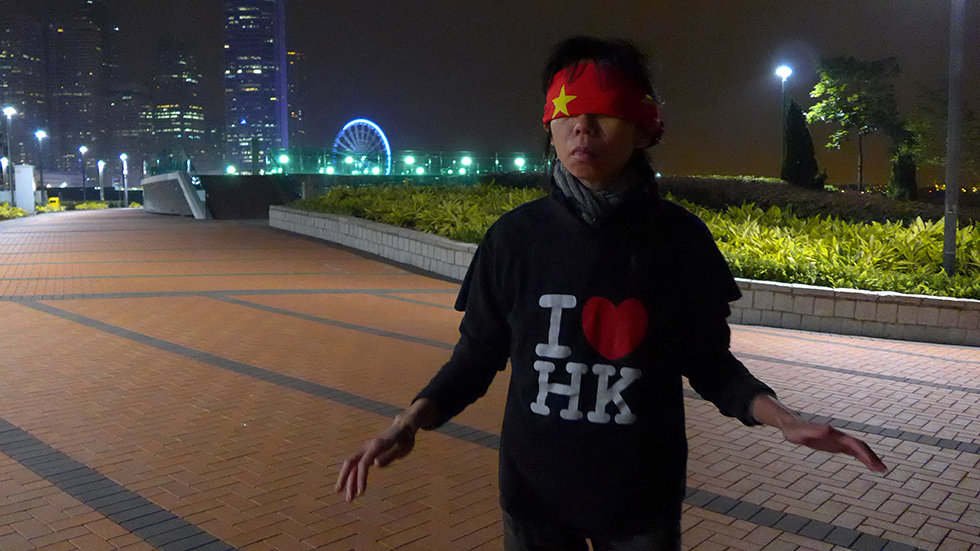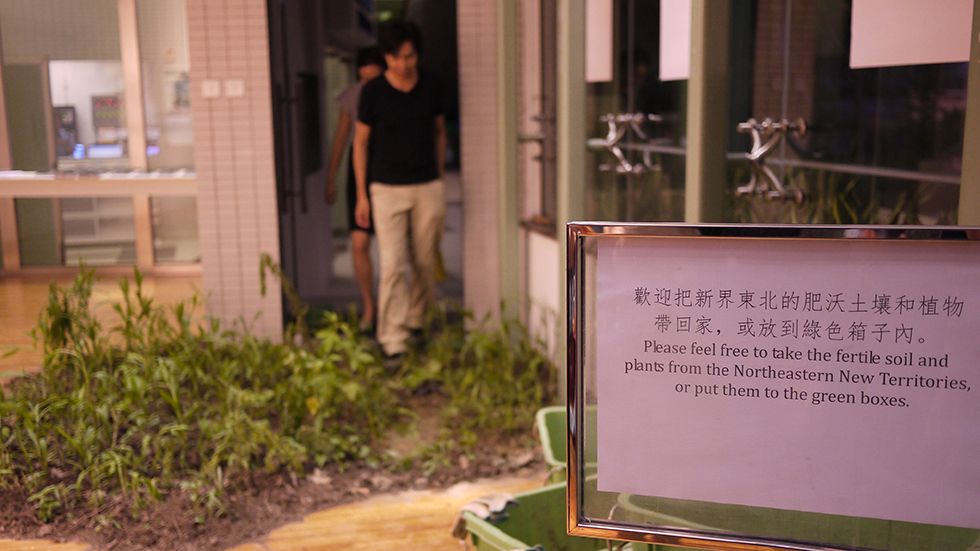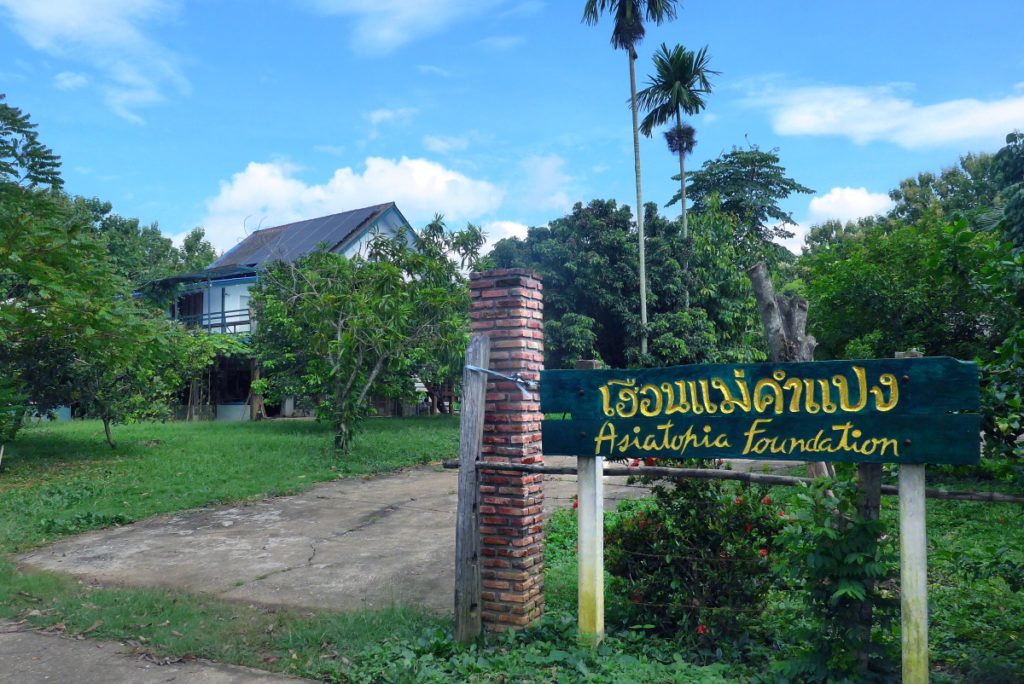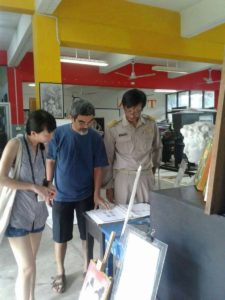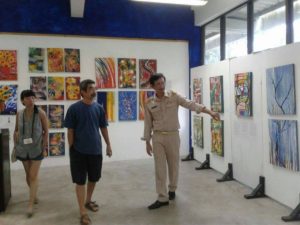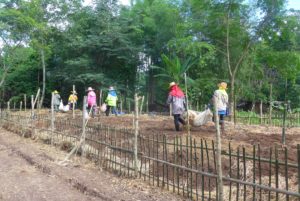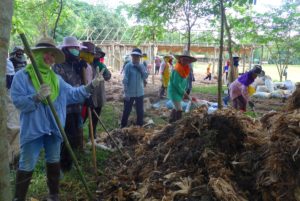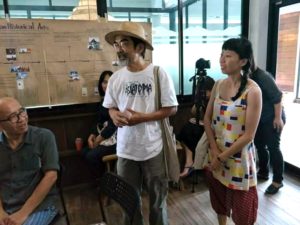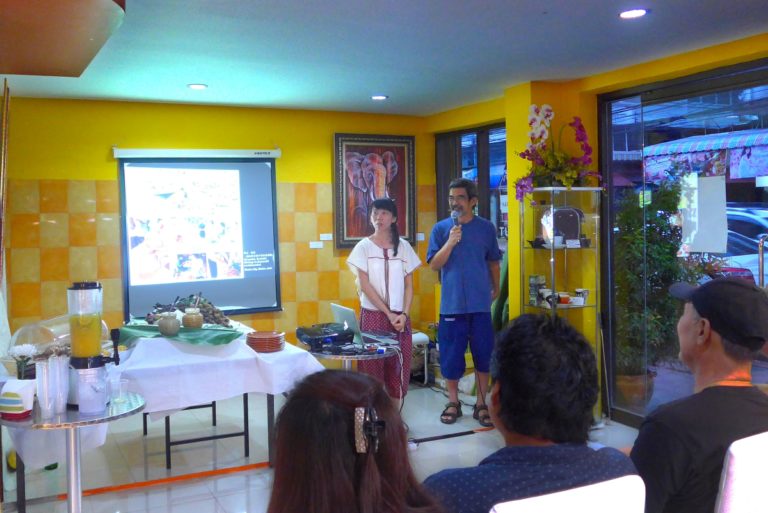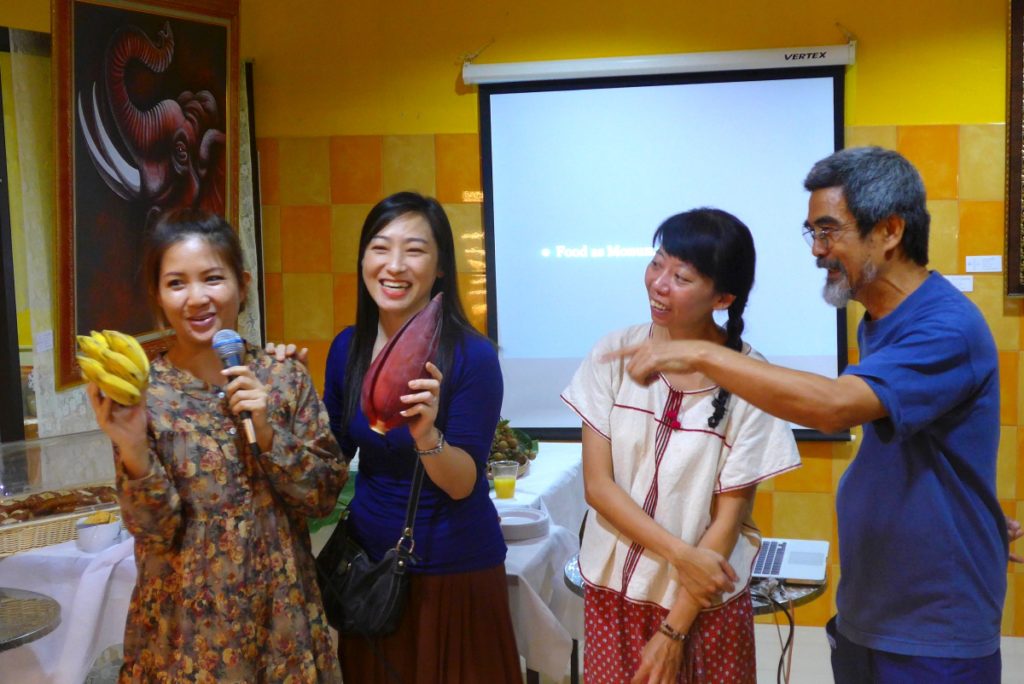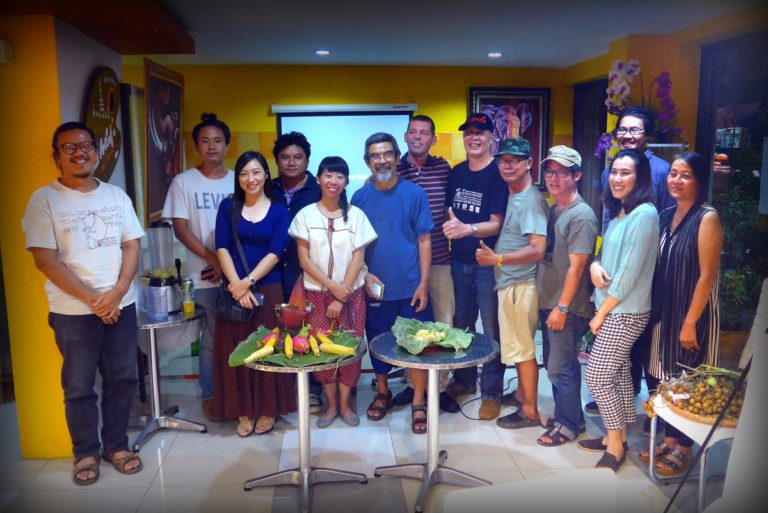From 24 July to 8 August 2017, I took up residency at the Asiatopia Foundation in Nan province, Thailand.
During my two-week stay, with the help of Chumpon Apisuk, Founder of Asiatopia Foundation, I visited some local farms, art school for ethnic minorities, temples, art gallery, etc for inspiration and met some local artists.
Inspired by the local food culture and rich agricultural produce in Nan province, I did a ‘lecture performance’ (artist talk plus mini-workshop) titled กิ๋น ข้าว ละ ก๊า Khob Khun Krub (have you been eaten?) on the topic of ‘Edible Monuments’ on 5 August in the Nan Art Café and Bakery, which is one of the most active art space in town.
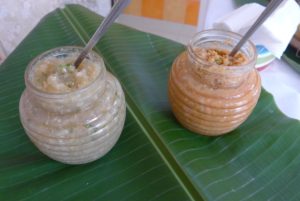
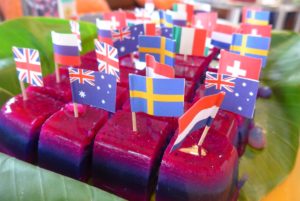
For my lecture performance, I prepared some food that I invented after acquiring cooking skills locally and adapting it to my understanding of Thai and Nan culture: Tom Yum Jam, and Papaya Salad Jam (bottom left). In collaboration with me, Chumpon Apisuk also created a special jelly interrogating Thai national identity. (bottom right)
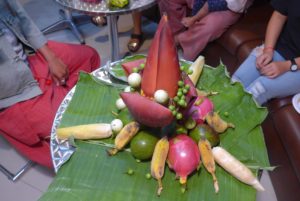
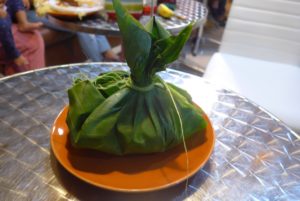
After my talk, I led a workshop for the participants who brought some food with them. After discussion and some exchange, they worked in two groups to create their own edible monuments that reflect their everyday life and eating culture.
Comparing to other big cities in Thailand such as Bangkok and Chiang Mai, Nan is a remote province and does not have a very vivid contemporary art scene. Performance or conceptual art and social practices are rather new to local community, art enthusiasts and even practicing artists who are mostly exposed to paintings in general. According to Chumpon Apisuk, this is the first artist talk plus workshop of this kind in town, and the participants were very impressed and excited and are looking forward to more contemporary art activities in near future.
My residency at Asiatopia Foundation offered me lots of inspiration about preservation of cultural traditions in the light of urban development. Nan is an under-developed province populated by various ethnic groups, most people live in a rather primitive and non-commercial way than big cities, and have a stronger sense of community and the ‘commons.’ I also found the identity issues faced by the ethnic groups in Nan migrated from the neighbour countries connected to the notion of cultural identity in Hong Kong.
(my residency at the Asiatopia Foundation was made possible with the support of Hong Kong Kong Arts Development Council.)

